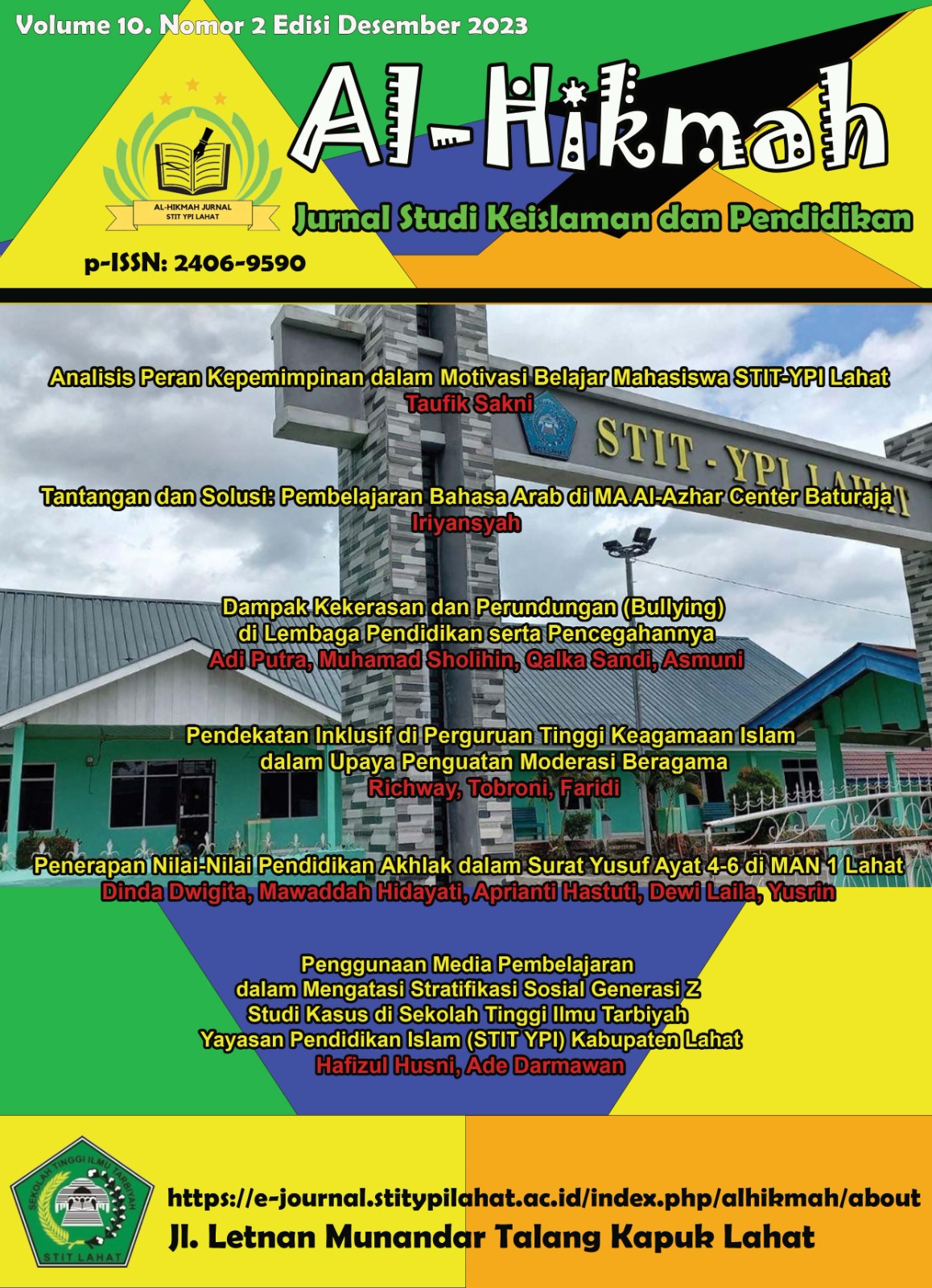Penggunaan Media Pembelajaran dalam Mengatasi Stratifikasi Sosial Generasi Z” Studi Kasus di Sekolah Tinggi Ilmu Tarbiyah Yayasan Pendidikan Islam (STIT YPI) Kabupaten Lahat
Main Article Content
Abstract
Z Generation has grown up in the digital age, where social media and information technology are essential to their daily lives. However, social stratification differences still impact education quality, access and learning outcomes. This article discusses the critical role of lecturers in overcoming social stratification using innovative learning media. It discusses various methods and approaches that lecturers can use to use technology to equalize access to education, improve learning quality, and enable Z Generation to participate in social mobility. This article also discusses how lecturers can create an inclusive learning environment, encourage critical thinking, and strengthen Z Generation’s ability to succeed academically and socially. The writing of this article uses methods to obtain research data using literature analysis, qualitative research, surveys, and Monitoring of Educational Technology, which will provide data diversity and in-depth perspectives to explain the role of lecturers in overcoming social stratification in Z Generation’s education.
Article Details

This work is licensed under a Creative Commons Attribution-ShareAlike 4.0 International License.
This work is licensed under a Creative Commons Attribution-ShareAlike 4.0 International License.
References
Ansari, J. A. N., & Khan, N. A. (2020). Exploring the role of social media in collaborative learning the new domain of learning. Smart learning environments, 7(6), 1–9. https://doi.org/10.1186/s40561-020-00118-7
Arsyad, A. (2006). Media Pembelajaran. Jakarta: Raja Grafindo Persada.
Ayun, P. Q. (2015). Fenomena Remaja Menggunakan Media Sosial dalam Membentuk Identitas. Channel, 3(2), 1–16.
Azzarkasyi, M., Rizal, S., & Kasmawati, K. (2019). The Identification of Student Misconceptions on the Concept of Electricity Using the CRI Decision Matrix Three Level Test. Asian Journal of Science Education, 1(1), 10–15. https://doi.org/10.24815/ajse.v1i1.14614
Beemt, A. Van Den, Thurlings, M., & Willems, M. (2020). Towards An Understanding Of Social Media Use In The Classroom: A Literature Review. Technology, Pedagogy, and Education, 29(1), 35–55. https://doi.org/10.1080/1475939X.2019.1695657
Budiati, I. (2018). Statistik Gender Tematik: Profil Generasi Milenial Indonesia (A. P. R. Ali Said, Indah Budiati, Tria Rosalina Budi Rahayu, ed.). Jakarta: Kementerian Pemberdayaan Perempuan dan Perlindungan Anak (Kemenpppa).
Carr, C. T., & Hayes, R. A. (2015). Social Media: Defining, Developing, and Divining. Atlantic Journal of Communication, 23(1), 46–65. https://doi.org/10.1080/15456870.2015.972282
Devi, K. S., Gouthami, E., & Lakshmi, V. V. (2019). Role Of Social Media In Teaching – Learning Process. Jetir, 6(January), 96–103.
Duarte, F. (2019). Berapa Banyak Waktu Yang Dihabiskan Rakyat Indonesia Di Media Sosial? - BBC News Indonesia.
Faizi, R., El Afia, A., & Chiheb, R. (2013). Exploring The Potential Benefits Of Using Social Media In Education. International Journal of Engineering Pedagogy (IJEP), 3(4), 50. https://doi.org/10.3991/ijep.v3i4.2836
Gerlach, V. G., & Ely, D. P. (1971). Teaching and Media. A Systematic Approach. Englewood Cliffs: Prentice-Hall, Inc.

